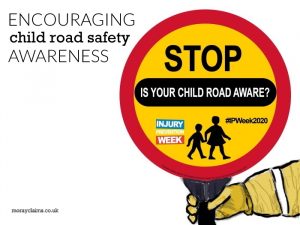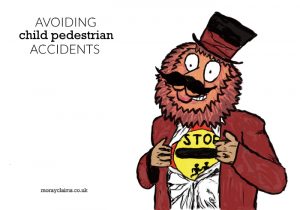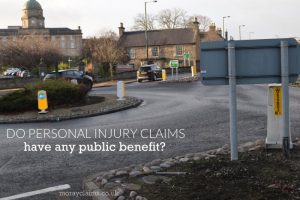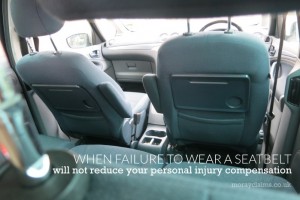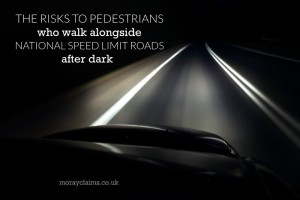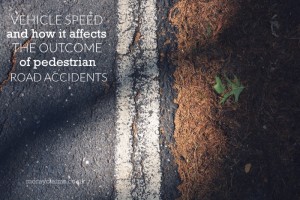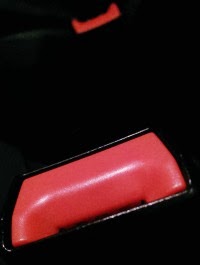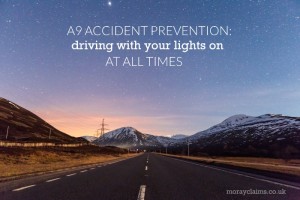Nearly two-thirds of parents do not think their children have a good understanding of the dangers or concentrate properly near roads That’s one of the findings of a YouGov survey commissioned by the Association of Personal Injuries for Injury Prevention Week 2020. In the UK-wide study, parents of school-age children were asked to think about how confident they are about their child or children’s road safety awareness. The child road safety survey results are as follows. The remainder said their children have a very good understanding of the dangers – which is great - but we want to address the near 2/3rds of parents who are not so confident. Your biggest helper comes in the form of the Green Cross Code. Arguably, it’s as important for children to learn as spelling and multiplication. The Highway Code says that children should be taught the Green Cross Code and should not be allowed out alone until they can understand and use it properly. This is Continue Reading
Pocket that phone and help prevent needless injuries on the roads
It does not look the sort of road you would expect to see a pedestrian try to cross. Other than at traffic lights. Or using a bridge or underpass. Viewed through the dashcam of the slow-moving car in queuing traffic, we can see it’s an urban environment. The road has 4 lanes in each direction (we’re in the 3rd lane). A continuous concrete barrier about 4 feet high forms the central reservation. A young woman steps off the pavement to our left and begins crossing from left to right – for her, crossing the first half of the road. She’s on her mobile. She’s holding it up to her right ear. We can see her left hand gesturing as she chats. The field of view is distorted by the wide angle lens of the dashcam – it makes things look further away than they are in fact. As the woman crosses in front of our vehicle, she bows slightly to thank us for making room for her to pass through. The outside lane to our right has been empty throughout the 8 seconds or so since she Continue Reading
Avoiding Child Pedestrian Accidents
School crossing patrols stopped in Moray from 20 August 2019. Meaning no more lollipop people to guide our children across the roads. We have to hope that the publicity this controversial Council cutback has received will mean all drivers will take extra special care when in the vicinity of any Moray school. In this article, we will consider 3 matters in relation to pedestrian road traffic accidents involving children. Firstly, we will consider the evidence about road safety measures such as school crossing patrols and why they provide useful benefits. We will then go on to look at the relative duties of drivers and child pedestrians and what scope there is for some of the blame falling on the injured child (contributory negligence). Finally, by means of an example, we will examine the issues that can arise along with contributory negligence, including possible shifting of blame onto a parent who has not taken proper care for their child's safety (in letting them out alone Continue Reading
Do personal injury claims have any public benefit?
It's a myth that there is a Compensation Culture. It's a myth that personal injury claims drive up insurance premiums. But is it possible to show any real public benefit from personal injury compensation claims? Moray Claims / Grigor & Young LLP operates at a fairly local level and, in this article, we will look at 4 examples of ways in which personal injury claims by individuals have resulted – or could result – in changes which are of public benefit. 1. Removing a trip hazard A successful claim for a pedestrian who tripped on a raised piece of tarmac on the pedestrian footway close to the underpass at Alexandra Road, Elgin, resulted in the defect being repaired by Moray Council within a matter of days of the claim being intimated. 2. Properly marking/highlighting a trip hazard This raised area within Elgin bus station caused a pedestrian to trip and fall and suffer injury. It was never entirely clear why the plinth was there in the first place - possibly for an Continue Reading
If you were not wearing a cycle helmet can you still claim for personal injury?
The law in the UK does not require pedal cyclists to wear a helmet. What this means is that you won’t be stopped by the police if you fail to wear a cycle helmet. You won’t be prosecuted under the criminal law. On the other hand, Rule 59 of the Highway Code categorises cyclists as vulnerable road users and advises that cyclists ‘should wear a cycle helmet which conforms to current regulations, is the correct size and securely fastened’. The Highway Code is relevant to both criminal and civil law. Claims for personal injury compensation are civil claims for damages, so the Highway Code is relevant. Many cyclists ride without a helmet. Only just over a third of cyclists using major urban roads wore cycle helmets, according to research findings of the UK’s Transport Research Laboratory in 2008. Equivalent research in Germany apparently showed that only 11 % of cyclists in towns and cities wear a cycle helmet. Cycle helmets have to comply with a European standard. This Continue Reading
When not wearing a seatbelt will not reduce your personal injury compensation at all
The modern car seatbelt was invented by a former aviation engineer, whose experience included working on ejector seats. By 1959, cars had seatbelts but only two-point waist restraints. In a car accident, this often did the wearer as much harm as good. Volvo engineer, Nils Bohlin, created a design which anchored the straps low beside the seat. This meant that the geometry of the belts formed a “V” - pointing at the floor – and that the belt would remain in place and not shift under sudden loading. Such a significant advance in driver and passenger safety could have netted Volvo a fortune on the patent. Instead, they gave it away. They decided that the invention was so revolutionary that its value should not profit their company but be a free, life-saving tool. In the world of personal injury claims, if you fail to wear a seat belt and are injured in a road traffic accident, you don’t expect to be free from blame. As we’ve examined elsewhere on this website, UK personal injury Continue Reading
Why Walking on National Speed Limit Roads during the Hours of Darkness is such a Bad Idea
Most of us did this experiment in school Science class. Using a 30cm ruler, one person holds it at the “30” mark and lets it hang down vertically. Their partner (person 2) puts the thumb and first finger of one hand at either side of the “0cm” mark on the ruler. Person 2’s fingers should almost touch the ruler, but not quite. Without warning, person 1 lets go of the ruler. Person 2 tries to stop the ruler’s descent as quickly as they can, by closing their finger and thumb together. You record the level (in cm), just above person 2’s finger, where the ruler was caught. You repeat the test five times and work out the average “catch distance” for the person. A conversion table allows you to translate the distance along the ruler into a reaction time, in milliseconds (thousandths of a second – i.e. one second is a thousand milliseconds). According to one such table, the first centimetre (“0cm – 1cm”) equates to 50 milliseconds. It then increases by 10 milliseconds per Continue Reading
How Speed Affects the Outcome of Pedestrian Road Accident Collisions
Escape velocity is the speed an object must reach to break the bonds of a planet’s gravitational force and get into orbit. To enter orbit around the Earth, for example, a spacecraft needs to be going at a staggering 7 miles per second (25,000 miles per hour). This creates a difficult series of connected problems. The vehicle requires a lot of fuel. Fuel adds weight. More weight means more thrust is required. Greater thrust demands more fuel. And so it goes on … Another situation where speed has a crucial effect on the outcome is in relation to pedestrian road traffic accidents. In this article, we will consider the significance of vehicle speed in pedestrian collisions. Secondly, we will consider the effect of some other factors apart from impact speed. Finally, we will look at some of the implications for measures which can be taken to improve road safety. Frontal impact collision research has considered the effect of speed. Research into road accidents involving Continue Reading
You Didn’t Wear A Seatbelt: Can You Still Claim?
Click Clack, Front ‘n’ Back. Though there are other famous public information campaigns dating from the 1970s, seatbelt laws did not come into force in the UK until 1983. Regulations for children to wear seatbelts followed in 1989 and then for seatbelts in the rear seats in 1991. It took a while for many people to wear seatbelts regularly but now it has become the accepted norm for anyone getting into a motor vehicle. Most car manufacturers install alarm systems to alert the occupants when a seatbelt is not engaged and the vehicle is in motion. In spite of the rules, there are still some people who will not willingly wear a seatbelt and there are in fact exemptions for certain people. You will still have a claim but your compensation will be reduced If you are unfortunate enough to have suffered injury in an accident whilst not wearing your seatbelt, you will probably still be able to make a claim for personal injury. The down side is that there may Continue Reading
A9 Accident Prevention: Driving With The Lights On
It’s good to see Del Amitri back on the road again for the first time in 12 years. Their set list includes the song “Driving with the brakes on” – not about a stationary vehicle but instead another complicated Justin Currie relationship scenario. Driving with the lights on is clearly a good idea at certain times of day or if conditions are poor. In this post, I’m making a more general road safety point - which is to suggest you consider driving with your lights on during the hours of daylight, at least on certain roads. Scotland’s "most dangerous" roads Scotland has few motorways and none north of Perth. At the top end of the country, trunk roads are the arterial routes. Many of these have only a single carriageway in each direction but some have sections with dual carriageway or “overtaking lanes”. Roads such as the A96, A82 and, especially, A9 (Scotland's longest trunk road), have gained a reputation for frequent accidents. Between 2006 and 2010, the A9 claimed more lives Continue Reading
Winter driving means an increased risk of accidents: what steps should you take?
Wintry weather is persisting into March around the Moray Firth. Inevitably, in winter, there tends to be an increase in road traffic accidents. At this time of year, we are more likely to be driving in the dark and on roads affected by snow and ice. Repeated freezing and thawing also increases the number and size of potholes in the roads. What steps can you take? Equipment to carry in your vehicle The Royal Society for the Prevention of Accidents (RoSPA) recommends certain basic safety equipment to keep in your vehicle at all times, so you are prepared if the weather deteriorates. This should include a towrope, de-icing equipment, a spare wheel, a torch, a first aid kit and a warm blanket. Checks on the vehicle itself In addition, you should check that your vehicle itself is properly prepared for winter conditions. Check your tyre pressure regularly and ensure that you have sufficient tyre tread as this will reduce the risk of loss of traction and skidding (as well as improving Continue Reading
Accidents on Rural Roads
RoSPA - the Royal Society for the Prevention of Accidents - published a policy paper (August 2010) addressing the safety of rural roads, which could be of interest to you if you have suffered personal injury on the roads in Moray or elsewhere in the North of Scotland. The publication points out that rural roads have not seen as rapid a fall in accident rates as urban areas in recent years. Rural roads still account for over 70% of fatal road accidents. RoSPA is of the view that simply managing the road environment itself can help to reduce the number of incidents where the road is a primary or indirect cause of the accident. According to RoSPA, some useful options are to alter the perceived road width with markings or roadside islands or by changing or removing the centre line. "Forgiving roadsides" can also help reduce the risk and severity of injury sustained if a vehicle leaves the main carriageway for a short period. If you have been injured in a road accident then Continue Reading
